Subscribe on Apple Podcasts and Spotify
I’m continuing my look-ahead series of podcast episodes to kick off 2022. Last week, Sara Fischer, media reporter for Axios, laid out her big themes for the year. This week, I spoke to Troy Young, the former president of Hearst Magazines, who over the years I’ve found to be very thoughtful about how the media business is changing. Reminder: If you like the podcast, please share it with others who might also find it valuable – and leave a rating and review on Apple Podcasts if you’re in the blue bubble brigade. Big thanks to mpm318 for this nice review.
If you’re making bets for a Word of the Year in digital media in 2022, identity is a good candidate. The nature of digital advertising is changing as the industry transitions away from the third-party cookie as a key audience identifier. Identity, both on the page and across the ecosystem, is an evolving and complex component to publisher monetization. Audigent’s Hadron ID serves as a cookieless “container” solution, delivering cookieless solutions at scale while being fully interoperable with other ID systems. It is simple to deploy and instantly enables end-to-end cookieless programmatic buying while delivering addressablity. Audigent is transforming how clean first-party data powers the programmatic landscape by putting the control back in the hands of publishers and advertisers.
Troy Young has been through the various interactions of digital media going back to the start. During the dot-com boom, he was an executive at early web marketing agency Organic. During Web 2.0, he decamped for video ad network VideoEgg, which turned into Say Media, a hybrid tech platform and vertical publisher, eventually landing at Hearst Magazines, where he was president. Now, he qualifies as officially Web3 curious, if not ready to start his day with “gm” tweet and regularly rely on riddles to explain what’s seemingly inexplicable in crypto.
“It's an incredible time to be a curious person,” he said on The Rebooting Show. “There's so much to learn and there's so many people who are not part of what is a sort of classic media ecosystem that are writing about things that there's really an unending source of inspiration.”
What stood out to me from the conversation:
The need for media companies to use Web3 to rethink their relationships with their audience as well as within their organizations
The promise of Web3 – and yes, we’re mostly talking promise vs reality at this point – is a fairer deal for all involved rather than the benefits and power going to a select few
The opportunities for new brands that are part of communities
Finally, I’m often struck by how few people deeply involved in the development of digital media are particularly pleased with many aspects of how it has turned out.
“Let’s face it, monetization on the open web never really worked that well outside of the datasets and buying interfaces that allowed Facebook and Google to sweep up the long tail of advertisers and take over huge amounts of that ecosystem, including everything from the magazine business to the yellow pages,” Troy noted.
Below are some highlights from our discussion.
The role of a media company
I’ve written previously about the unbundling of publishing, which will naturally be followed by a period of re-bundling. An important point when discussing the “threat” of Substack to publishers is unpacking the various functions of a publisher, which go far beyond creating content.
“A brand sets expectations that gives the audience a sense of what they're to expect. It’s a lens, a point of view, and you gather a bunch of writers and content creators that fit inside of that lens. It has an industrial function, the middle of a media company, taking that information and making it available to people, creating monetization mechanisms, selling the media, doing PR around the media, organizing the logistics of distributing the media. The middle is about distribution and monetization and managing a roster of content creators. Executives at media companies – the best of them – understand the role that the media plates in culture, in the lives of the audience in terms of what that brand means and how it evolves over time. The greatest media brands are ultimately communities. They connect lots of people together with an idea or point of view.”
Media’s shift from institutions to individuals
Young writes a weekly newsletter at People vs Algorithms. He’s tracked how his own consumption patterns have drifted from established media entities to upstarts build around individuals.
“I spend more time with the individual creator media brands, whether that's Ryan Broderick or Casey Newton. This hybrid expert/journalist role has become much more important to me in terms of the expertise and having a real sense of how things work. There's a kind of new writing style emerging, which is more conversational. You see that a lot in Puck, which is a favorite new media brand that’s a collection of well-resourced and super-connected writers across four different beats. I find it to be a really satisfying media experience. There’s a new class of media, anchored in individuals, expert led.”
The middle gets crunched
If there’s one constant to digital media’s continued evolutions it’s that the middle always gets crunched. The bifurcation of digital media is defined by the publications that have run the gauntlet to achieve true scale and those that can be indispensable to specific audiences. Between those two, carnage.
“At worst, what you see is old magazine brands that have a little bit of domain authority that are totally hollowed out to become a vessel for an affiliate effort of a new owner. At the high end, particularly when the content is highly differentiated and unique, you see them building good subscription businesses, but in the middle, lifestyle publishers have a really hard time. They get addicted to forms of digital monetization that are very contrary to the needs of users. The web is a mess and monetization on the web is a mess. And you see it in local news. You see it in a lot of magazine brands.”
The promise of Web3
Few are pleased with the current state of digital media, between overwhelming power accrued by tech platforms to horrendous user experience that’s akin to an abusive relationship to rampant distrust among all participants. No wonder that many are looking for a reset. Enter Web3, the broad-brush term slapped on a set of new technologies that promise to use the blockchain to claw back power from big gatekeepers and put it in the hands of people.
“It's a shared database that people can build on. It’s an identity that you can own. It’s largely defined by ownership, which is a base motivator for most people. It’s this kind of distributed system that keeps all parties aligned so you don’t need big intermediaries to manage things like financial transactions between individuals. It’s an interesting system of relationship programmability so that we can agree to things in advance and write those into a contract and those get executed essentially on a computer. It enables new types of collaboration, new types of ownership, the streamlining of a lot of financial relationships. It’s incredibly powerful. Having witnessed the potential and optimism in the late ‘90s around the early internet, there was a lot to be excited about, even the idea that you could get basic information or sell something on the internet or send a piece of communication over the wire. This is just a complete gamechanger.”
Web3 could change ad targeting
The history of digital media is inextricably tied to the history of online advertising. Until recent years, with the popularity of subscription models, the web was almost entirely reliant on advertising as the driver of revenue. The growth of advertising technology has come at a cost as people and regulators grow alarmed at the rampant collection of user data. The current scramble to replace the third-party cookie is indicative of the inflection point digital advertising has arrived at.
“You could imagine a new sort of cross-internet identity system, where the targeting technology could point at someone's location on the blockchain and say, this is the profile of that consumer and this is how they want to be communicated with. One could see a way where the consumer could be in control of a media transaction in a way that would allow them to get more of the fruit of a media exchange in the sense that whey would benefit from some type of interaction. Your wallet becomes an identity mechanism that moves across multiple endpoints on the internet. That becomes something that you allow companies to use as a basis for targeting and you could benefit from that. I think that’s really powerful.”
5 things to check out
Innovation often takes places at the edges, so it’s no surprise that InfoWars is a leading example of how media can be used to sell products, in his cases wacky supplements like Brain Force Plus. According to documents obtained by HuffPost, InfoWars took in $165 million in sales over a three year period running from Sept. 2015 to the end of 2018.
New forms of media rarely kill previous forms. Sales of vinyl records are now at the equivalent level as 1991. The zero-sum mentality for new formats is frequently wrong.
The promise-to-reality gap in Web3 is starting to attract a drumbeat of criticism. One of the more reasoned – and detailed – arrives from Moxie Marlinspike, who details how the current shortcomings of web3 don’t have easy fixes that don’t involve, you guessed it, centralization. The question for me is how quickly the user experience improves to the point it has near parity with the easy to use but problematic services offered by existing tech platforms.
The Ankler is a publication to watch. With the addition of Janice Min, the Substack is going the micro-media route with a collective that emphasizes various personalities. I believe we’ll see more of these attempts to take the best of individual newsletters and adapt them to the best of institutional brands.
If you missed the #MediaoceanRetreat that was held virtually during CES, you can register to watch the recording on demand when it's available. Sessions from the two-day program include speakers from big tech platforms like Facebook, LinkedIn, and Twitter, big brands like Cadillac, P&G, and Pepsi, big agencies like Dentsu, Omnicom, Publicis, and WPP, Big Networks like CBS, NBCU, and Univision, and big personalities like Bill Wise, Joanna O'Connell, Rishad Tobaccowala, Sir Martin Sorrell, and Yours Truly. Go to www.Mediaocean.com/Retreat and fill out the form to receive links to all the content when it's posted.*
*Sponsored
Thanks for reading. Please share this newsletter with anyone you think would find it valuable. Also, hit reply with what you’d like to see in future issues.



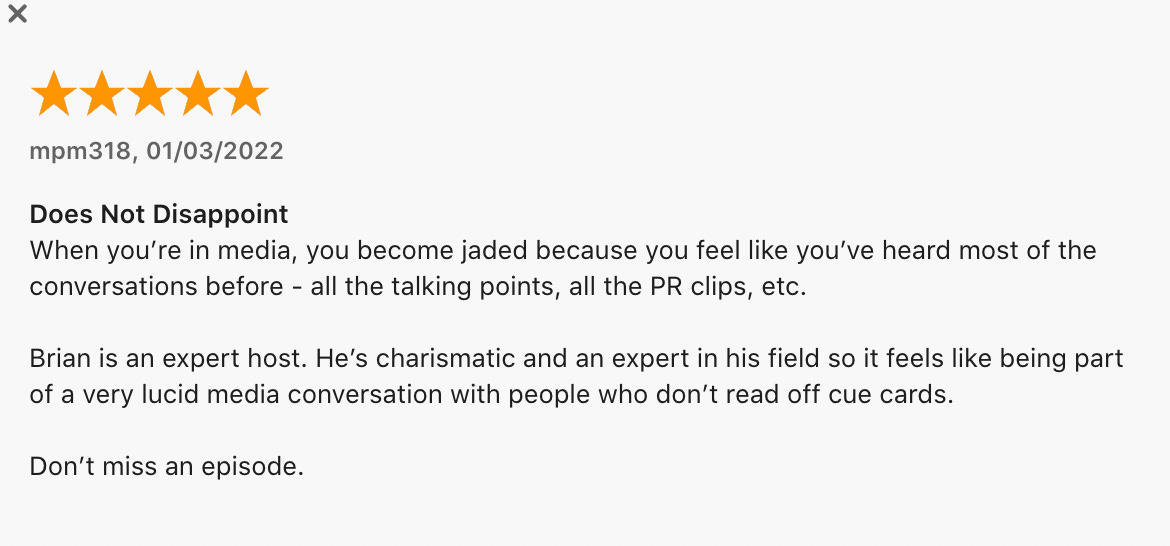







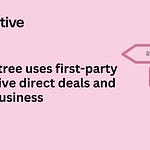
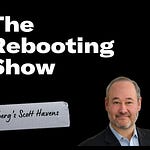

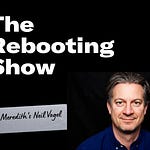
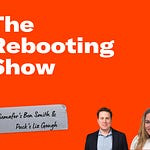



Troy Young on publishing's pivot to individuals